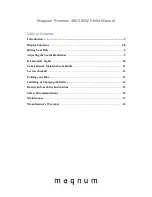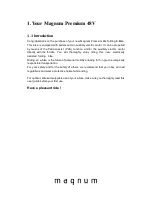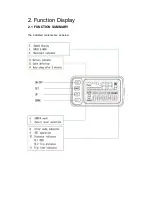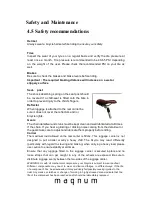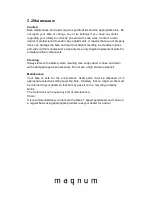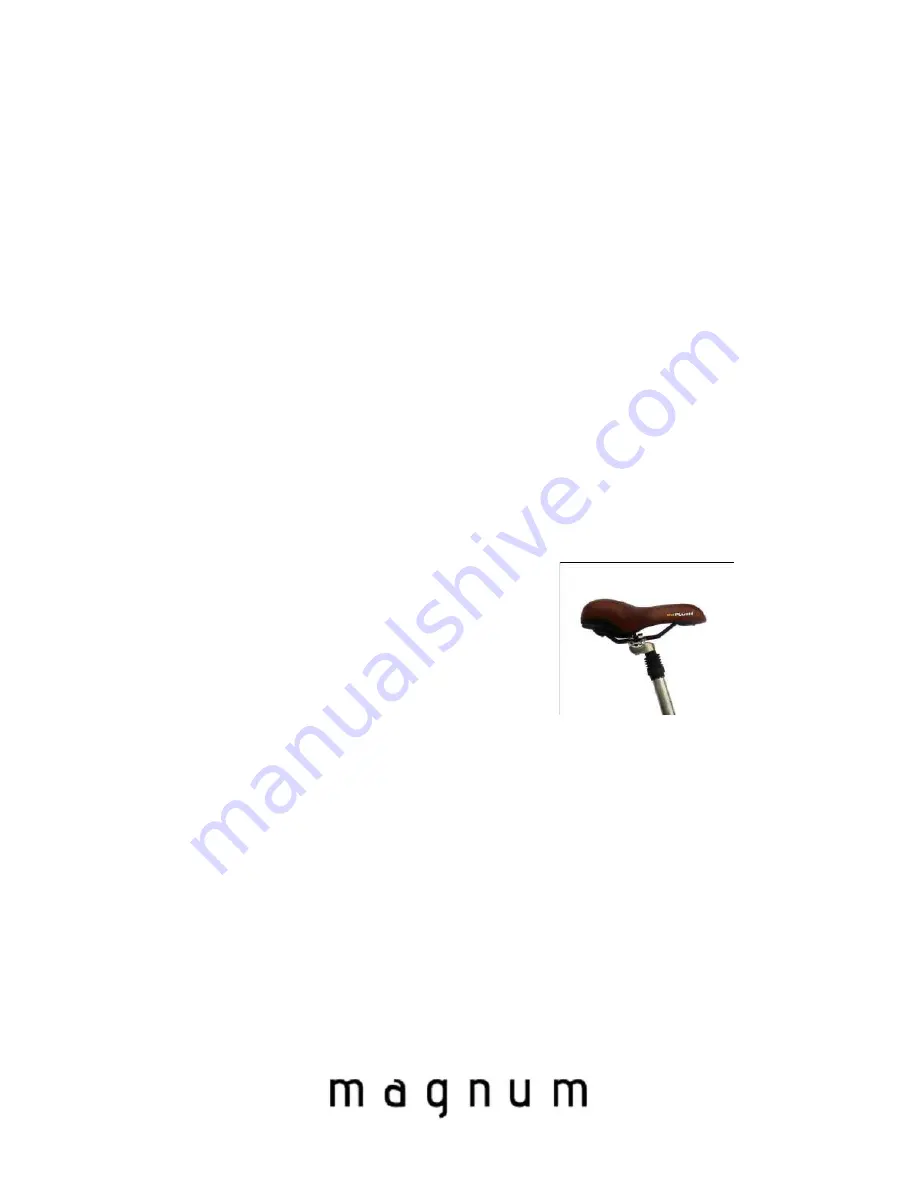
Safety and Maintenance
4.5 Safety recommendations
Helmet
Always wear a bicycle helmet while riding to ensure your safety.
Tires
Inspect the wear of your tyres on a regular basis and verify the tire pressure at
least once a month. Tire pressure is recommended to be 40-65 PSI depending
on the weight of the user. Please check the recommended PSI on your tire as
well.
Brakes
Be sure to check the brakes and brake levers before riding.
Important : The required braking distance will increase on a wet or
slippery surface
Seat- post
The shock absorbing spring on the seat post should
be covered if a child-seat is fitted onto the bike in
order to prevent injury to the child’s fingers.
Reflector
When luggage is attached to the rear carrier be
sure it does not cover the reflectors and/ or
bicycle lights.
Gears
The chain derailleur and crank must be kept clean and well lubricated at all times.
If the chain. If you hear a grinding or clicking noise coming from the derailleur or
the gears take care to adjust and lubricate them properly before riding.
Carrier
The maximum load allowed on the rear carrier is 50Lbs. This luggage carrier is not
designed to pull a trailer or carry a heavy child. The bicycle may react differently
(particularly with regard to steering and braking) when carrying a heavy load, please
use caution to ensure stability at all times.
Ensure that any luggage fitted to the luggage carrier is secured in place and no
loose straps that can get caught in any of the wheels are exposed. Be sure to
distribute luggage evenly between the two sides of the luggage carrier.
WARNING: As with all mechanical components, your bicycle is subject to wear and tear.
Different components may react to wear and tear and fatigue in different ways. If the life
of a component has been exceeded, it may suddenly fail possibly causing injuries to the
rider. Any cracks, scratches or change of coloring in highly stressed areas indicate that the
life of the component has been reached and it should be immediately replaced.

